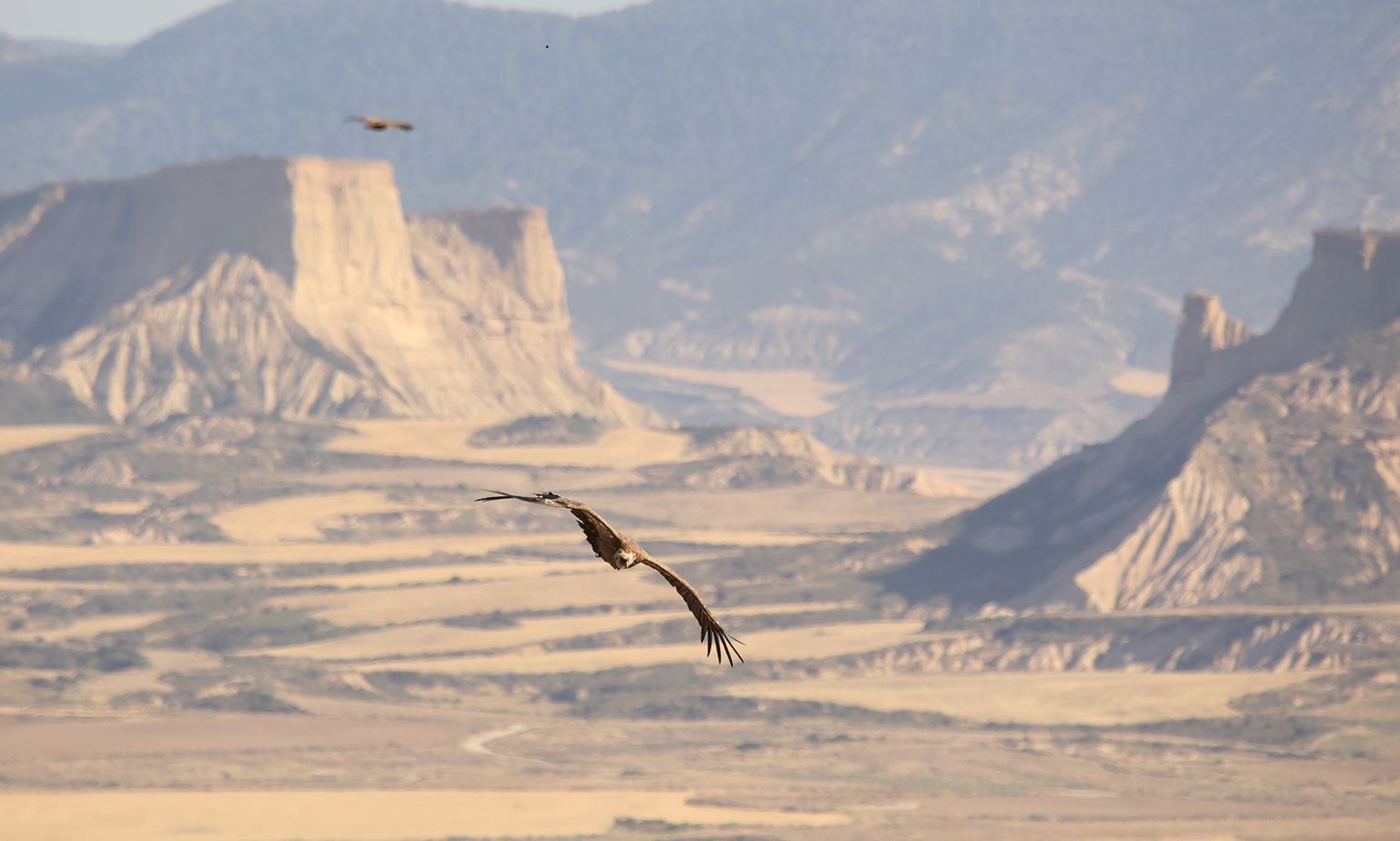Increasing tourism pressure can negatively affect Griffon vultures breeding in protected areas. The results of a new study, carried out by researchers from the Doñana Biological Station (EBD-CSIC), the University of Seville and the Miguel Hernández University, have been published in the journal Ibis and are included in several initiatives of the Bardenas Reales de Navarra Community aiming at assessing the effects of touristic activities on biodiversity.
José Antonio Donázar, leader of the study and Professor of Research at the Doñana Biological Station, explains that "We collected data from seven Griffon vultures breeding in the Bardenas Reales Natural Park, to determine whether bird's movements were different on the days when the number of visitors increased". The data showed that the number of tourists seemed to affected the movement patterns. Indeed, the GPS-tagged vultures tended to avoid the core areas in the natural park on those days when the presence of people were higher, especially on weekends and holidays in spring and summer. Additionally, males moved further than females.
As expected, temperature had a stronger effect, as these birds are highly dependent on thermal currents for soaring across long distances. "These results are consistent with previous studies that we have carried out in this area. They showed how the patterns of carcass consumption by avian scavengers were also altered on days with a higher arrival of visitors. All these results suggest that small changes in the foraging behaviour could alter ecological functions", explains Ainara Cortés Avizanda, coauthor and researcher at the University of Seville.
After a decrease due to Covid19 restrictions, people's visits to natural areas have resumed, increasing even above previously observed levels of inflow. This undoubtedly has positive aspects, as it brings the public closer to nature and increases the positive perception of the conservation of protected areas and biodiversity. Measures will be needed to mitigate these negative effects without reducing the positive aspects of the interaction between visitors and nature.
Eneko Arrondo, researcher at the University Miguel Hernández, concludes, "if the number of visitors to natural areas continues to increase, local exclusions of Griffon vultures may become more common, so further research is needed to address the potential consequences for the scavengers population and ecosystem functions and services they provide".
Reference:
Donázar, J.A., Cortés-Avizanda, A., Arrondo, E., Delgado-González, A. y Ceballos, O. 2022. Hidden effects of high numbers of tourists in protected areas: displacement of foraging top scavengers. Ibis. https://doi.org/10.1111/ibi.13121
Contact
https://doi.org/10.1111/ibi.13121








 ¡Abierta convocatoria para proyectos de investigación en la ICTS- Doñana!
¡Abierta convocatoria para proyectos de investigación en la ICTS- Doñana!


